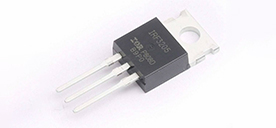Optimizing GND layout: the key to improving PCB circuit performance
2024/8/6 10:32:27
Views:
In practical applications, especially in complex printed circuit board (PCB) design, voltage differences in the ground (GND) can cause unexpected problems. This article explores how single-ended circuits can transform into differential circuits under the influence of GND voltage differences, and the impact of this transformation on circuit performance.
I. Basic Understanding of GND in Circuits
In circuit schematics, the GND symbol is ubiquitous, representing the reference potential point of the circuit, usually set to 0V. Designers assume that all GNDs on the PCB are at the same potential. However, in reality, the GND network on the PCB has impedance and resistance, causing voltage drops when current flows through the GND network.
II. The Phenomenon of GND Not Being GND
When there's a voltage distinction between distinctive GND focuses on the PCB, this contrast can be caused by different components, counting the format of the GND arrange, the choice of current ways, and obstructions from other components on the PCB. This voltage distinction encompasses a noteworthy affect on the execution of the circuit.
III. Contrasts Between Single-Ended and Differential Circuits
3.1 Single-Ended Circuits

A single-ended circuit refers to a circuit where the signal source and load are connected to GND through a single path. In such circuits, the reference point for the signal is GND, and all voltage and current measurements are made relative to GND. Single-ended circuit designs are relatively simple, but their performance can be severely affected by GND voltage differences.
3.2 Differential Circuits

Differential circuits use the difference between two signals (differential signals) to transmit information and have stronger suppression capabilities for common-mode noise and interference, making them widely used in high-performance applications. However, when a single-ended circuit transforms into a differential circuit due to GND voltage differences, it is usually a negative change.
IV. Transformation of Single-Ended Circuits When GND Is Not GND
When there is a voltage difference in the GND on the PCB, a single-ended circuit may exhibit the characteristics of a differential circuit. The voltage values of the various nodes in the circuit relative to different GND reference points will differ, causing distortion during signal transmission. For example, in a standard non-inverting amplifier circuit, GND potential differences will introduce output errors.
V. Impact on Circuit Performance
When a single-ended circuit transforms into a differential circuit due to GND voltage differences, the impact on circuit performance includes:
Increased output error: GND voltage differences cause the output signal to deviate from the expected value, leading to increased errors.
Signal distortion: Differential signal characteristics cause distortion during signal transmission, affecting signal quality.
Reduced system stability: GND voltage differences may affect system stability, leading to phenomena such as self-oscillation and other instability issues.
VI. Solutions
To address the issue of single-ended circuits transforming into differential circuits when GND is not GND, the following measures can be taken:
Optimize PCB layout: Use appropriate layout techniques to ensure that the GND of the input power supply, input resistors, and output voltage are at the same potential.
Adopt "star" GND method: Physically connect important GND points closely together to form a star structure, reducing impedance between GND connections and minimizing voltage differences.
Add decoupling capacitors: Increase decoupling capacitors in the GND network to absorb high-frequency noise and interference, reducing GND voltage differences.
Regular inspection and testing: Regularly inspect and test the voltage differences in the GND network during circuit design and manufacturing to ensure they are within acceptable ranges.
VII. Conclusion
When GND is not GND, single-ended circuits transform into differential circuits, significantly impacting circuit performance. By optimizing PCB layout, adopting the "star" GND method, adding decoupling capacitors, and conducting regular inspections and testing, this problem can be effectively resolved, ensuring circuit stability and performance. In electronic circuit design, it is essential to fully recognize the importance of GND and take effective measures to ensure the stability and consistency of the GND network.
Related Information
-
-
Phone
+86 135 3401 3447 -
Whatsapp





